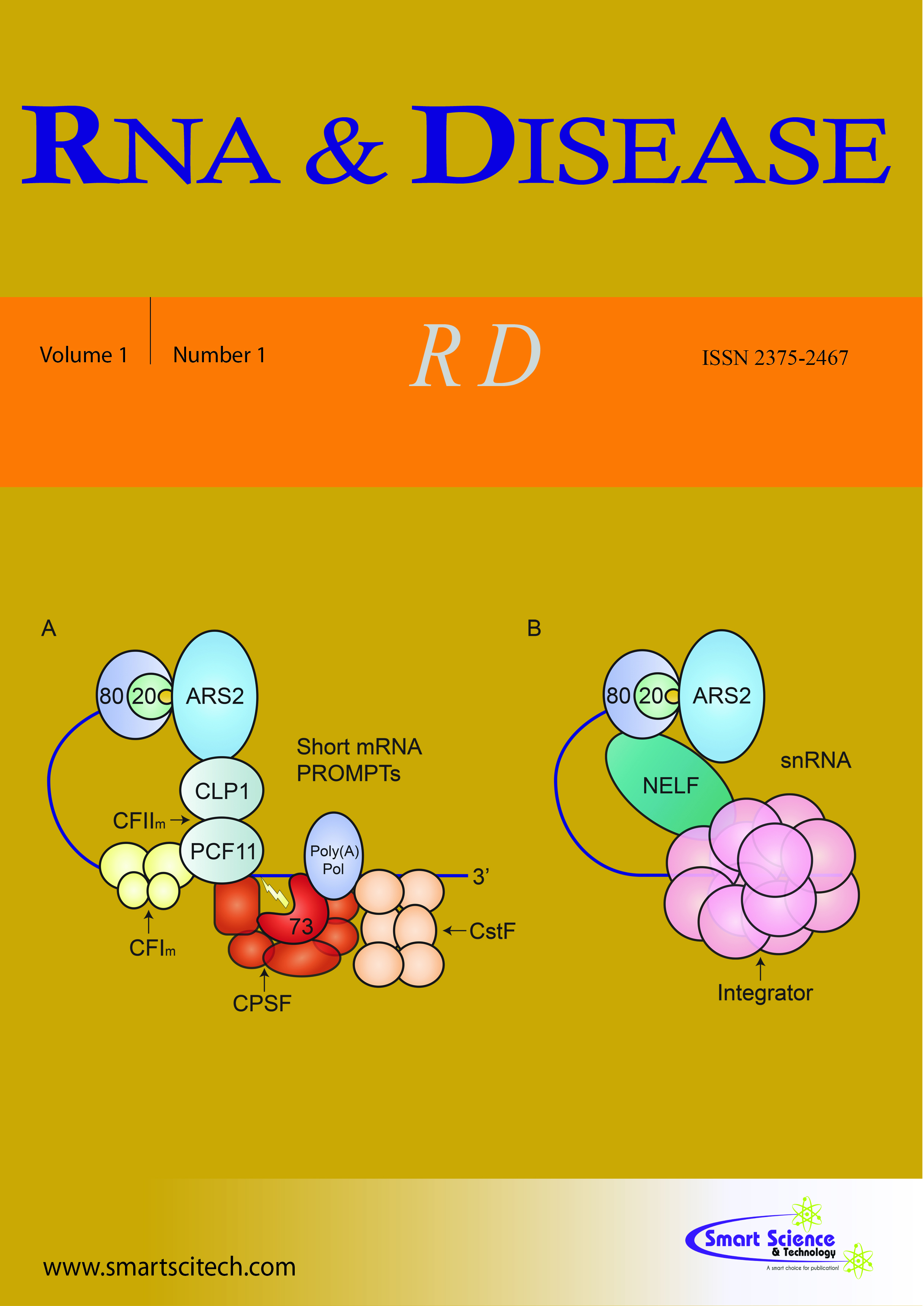The role of the CCDC26 long noncoding RNA as a tumor suppressor
DOI: 10.14800/rd.1022
Abstract
CCDC26 on chromosome 8q24 is considered to encode a long intergenic noncoding RNA because the short open reading frame within the mRNA transcribed from this gene is not conserved in any other species. Genome-wide analysis has revealed association of CCDC26 with certain tumors, for instance low-level glioma. Moreover, 1.5- to 2-fold amplifications of the whole or part of the CCDC26 genetic locus have been observed in pediatric acute myeloid leukemia patients. The CCDC26 gene is amplified in the HL-60 acute myeloid leukemia cell line, in which double minute chromosomes—abnormal tiny chromosomes—harbor the CCDC26 gene. We examined the function of CCDC26 by gene knock-down (KD) using short hairpin RNAs in K562 human myeloid leukemia cells. In four stable KD clones, CCDC26 expression was suppressed to 1% of its normal level by transcriptional gene suppression, not post-transcriptional suppression. The growth rates of these KD clones were reduced compared with those of control cells in media containing high serum concentrations. In contrast, in media containing much lower serum concentrations, the KD clones exhibited significantly higher growth rates than controls, and increased survival after serum withdrawal. Enhanced expression of a receptor tyrosine kinase, KIT, was detected in the KD clones, and treatment with ISCK03, a KIT inhibitor, eliminated their increased survival in the absence of serum. Therefore, CCDC26 seems to control myeloid leukemia cell growth through regulation of KIT expression. These observations suggest that CCDC26 is a tumor-suppressive long noncoding RNA because it suppresses the KIT oncogene that supports survival of cancer cells in the stem cell state.












